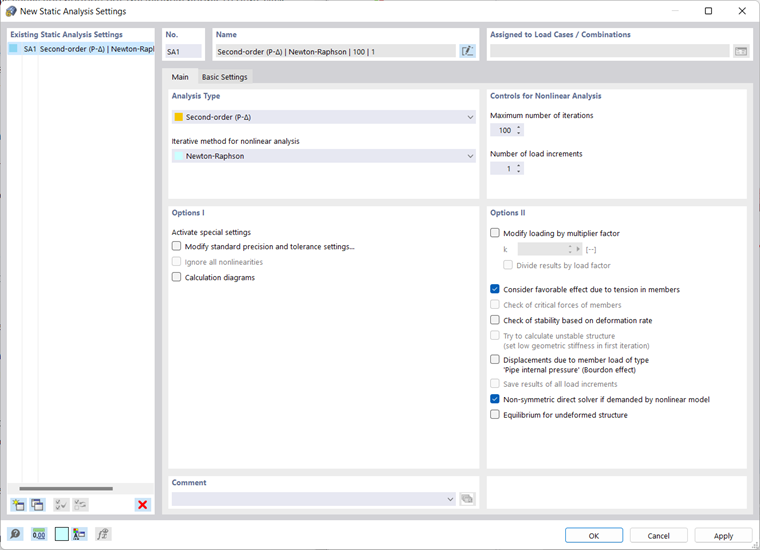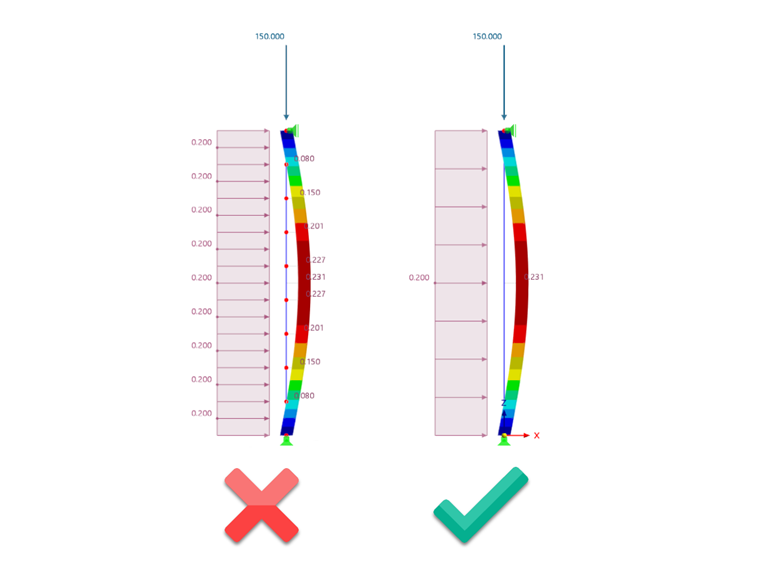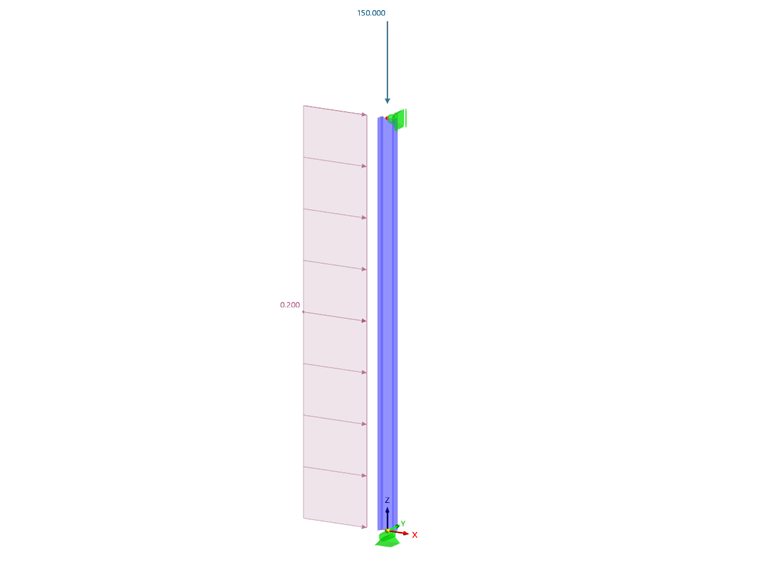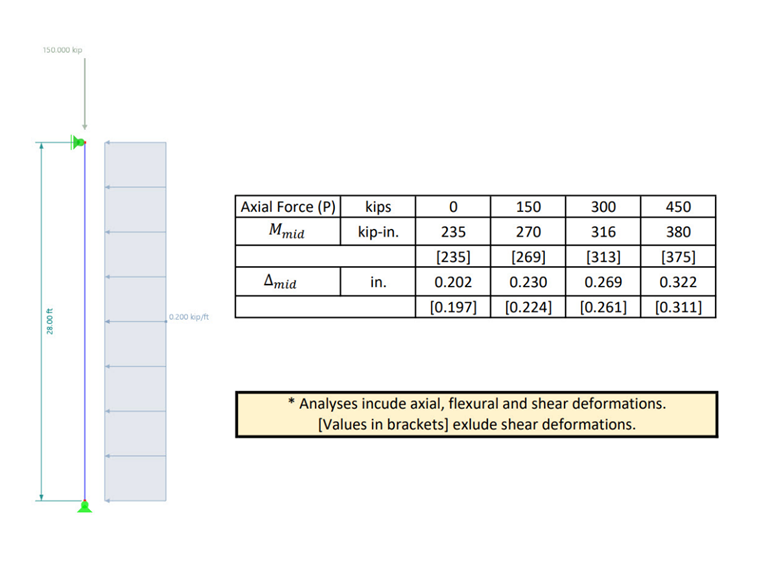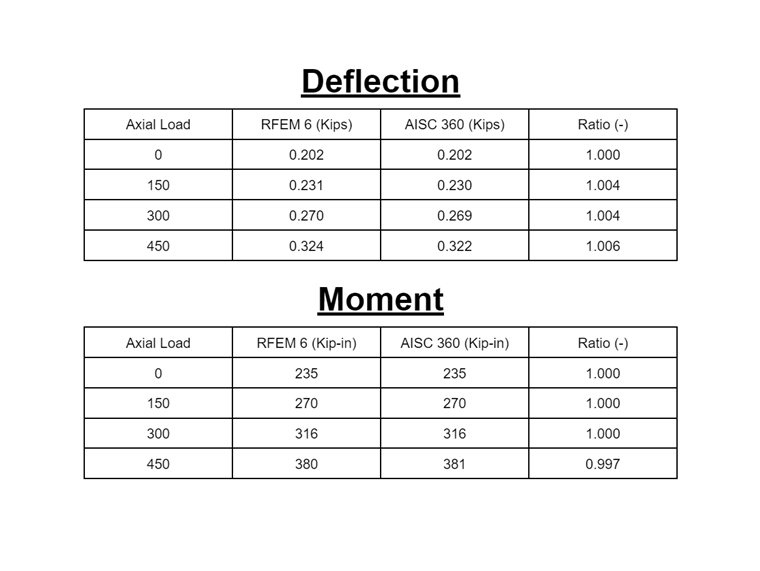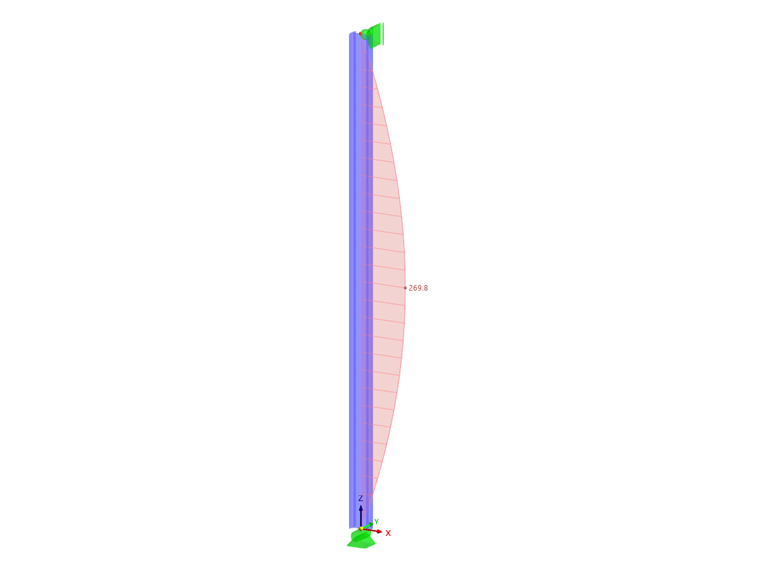In RFEM 6 second-order effects, including little p-δ, are by default automatically taken into account under Load Combinations when the analysis type is set accordingly. In the second-order analysis calculation, with respect to p-δ, the curvature found locally along a member is taken into account, which is caused by secondary moments as member lateral deflects. This additional curvature can cause increased internal moments and, in turn, increased lateral deflection until the member reaches equilibrium or exceeds the critical buckling load. In RFEM 6 and RSTAB 9, it is possible to calculate Load Cases and Load Combinations according to the various methods of analysis.
Do I need to divide members into multiple segments for p-δ effects to be taken into consideration?
It is not necessary to divide members using nodes into multiple segments to take into consideration p-δ effects. The reason for this is that p-δ effects are not based on nodal displacements.
In the attached example taken from the AISC 360-16 standard [1], RFEM 6 will be compared to the values and verified. Imperial units will be used according to Fig. C-C2.2 Benchmark Problem Case 1. The example consists of a simply supported W14x48 I-beam that has a uniform force of 0.200 kip/ft applied to the major axis. In the image below, this is modeled in RFEM 6.
Then, a variable axial load is applied using separate Load Cases. In the image below, the varied loads and corresponding moments/deflections taken from AISC 360-16 [1] are shown. These values are used and compared for the verification.
A table was created below so the results from AISC 360-16 [1] and RFEM 6 can easily be compared. The closer the ratio is to 1.000, the more accurate the result. As shown in this table, each result matches almost exactly, with only a small discrepancy due to rounding. Lastly, attached below is the RFEM 6 model, available for download.
